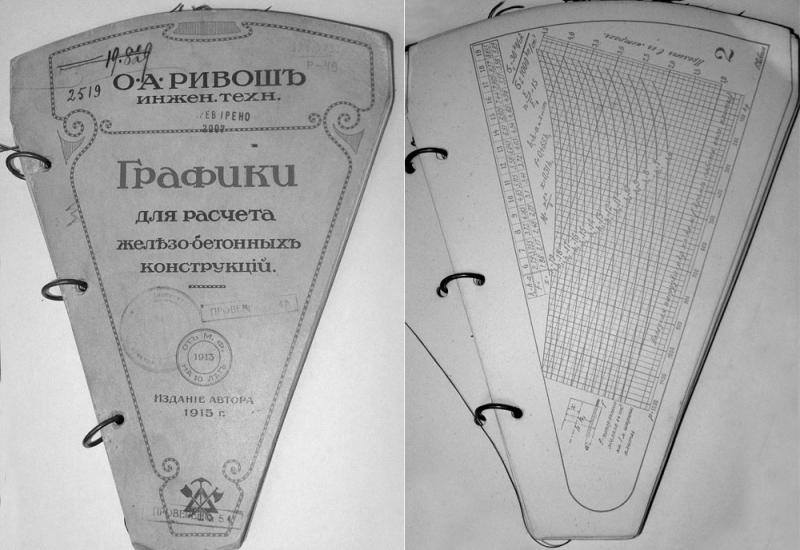Means of computer technology have appeared for a long time. Originally, they were counting sticks and pebbles (in Latin - calculi), subsequently the abacus and counters appeared. In the seventeenth century the logarithms and first logarithmic rulers, as well as the first mechanical counting machines, were invented.
In the XIX century there were nomograms - special drawings, with which you can find the values of functions and even solve the equation. The simplest nomogram can be considered a graph of any function. The nomograms were widely used for practical calculations in many industries like electrotechnology, resistance to materials, heat engineering, military affairs, and others.
In the reading room number 2 of the Scientific and Technical Library by G.I. Denysenko of our university keeps an interesting book - a collection of nomograms: “An encyclopedia of Denominac” is published in 1915 at the expense of the author, engineer-technologist Osip Abramovich Rivosha, a book of nomograms: "Graphs for the calculation of reinforced concrete structures". The pages are in the form of incomplete sectors and are made of solid cardboard with a clear print. In the preface, the author is so recommending his manual: "The way of using graphs is simple and convenient, - the counting of quantities is made soon, - without any difficulty. The graphs occupy little space, are not applied to a millimeter grid, which does not wear out the sight at frequent use ..."
O. A. Rivosh headed the St. Petersburg Construction and Technical Bureau. In the 1930's he was in charge of the Department of Resistance Materials at the Military-Mechanical Institute (Leningrad). He published a series of books on material resistance, including a textbook on material resistance and a guide for designing metal rafters.

